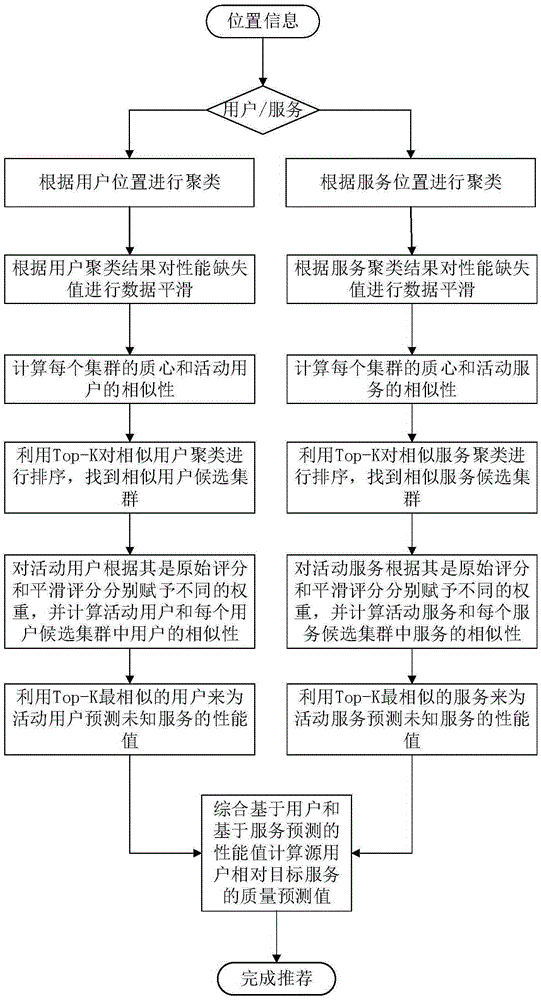Collaborative Web service performance prediction method based on position clustering
A performance prediction and web service technology, applied in text database clustering/classification, other database retrieval, transmission system, etc., can solve problems such as high calculation cost, difficulty in accurately measuring similarity, and sparse data
- Summary
- Abstract
- Description
- Claims
- Application Information
AI Technical Summary
Problems solved by technology
Method used
Image
Examples
Embodiment Construction
[0060] Such as figure 1 As shown, the steps of the collaborative web service performance prediction method based on location clustering in this embodiment include:
[0061] 1) According to the location information of users and services, cluster the users and services with the same autonomous system number, that is, the AS number;
[0062] 2) Randomly select users as active users, and at the same time randomly select services as active services. According to the historical performance records and clustering information of active users, use the results of user clustering and service clustering to classify the vacant users in the user-service matrix. The performance value is filled with data smoothly. The historical performance records include records of response time, throughput, reliability, price and availability, and the user-service matrix records the historical performance of each user calling the Web service. In this embodiment, the user-service matrix is obtained by pr...
PUM
 Login to View More
Login to View More Abstract
Description
Claims
Application Information
 Login to View More
Login to View More - R&D
- Intellectual Property
- Life Sciences
- Materials
- Tech Scout
- Unparalleled Data Quality
- Higher Quality Content
- 60% Fewer Hallucinations
Browse by: Latest US Patents, China's latest patents, Technical Efficacy Thesaurus, Application Domain, Technology Topic, Popular Technical Reports.
© 2025 PatSnap. All rights reserved.Legal|Privacy policy|Modern Slavery Act Transparency Statement|Sitemap|About US| Contact US: help@patsnap.com



